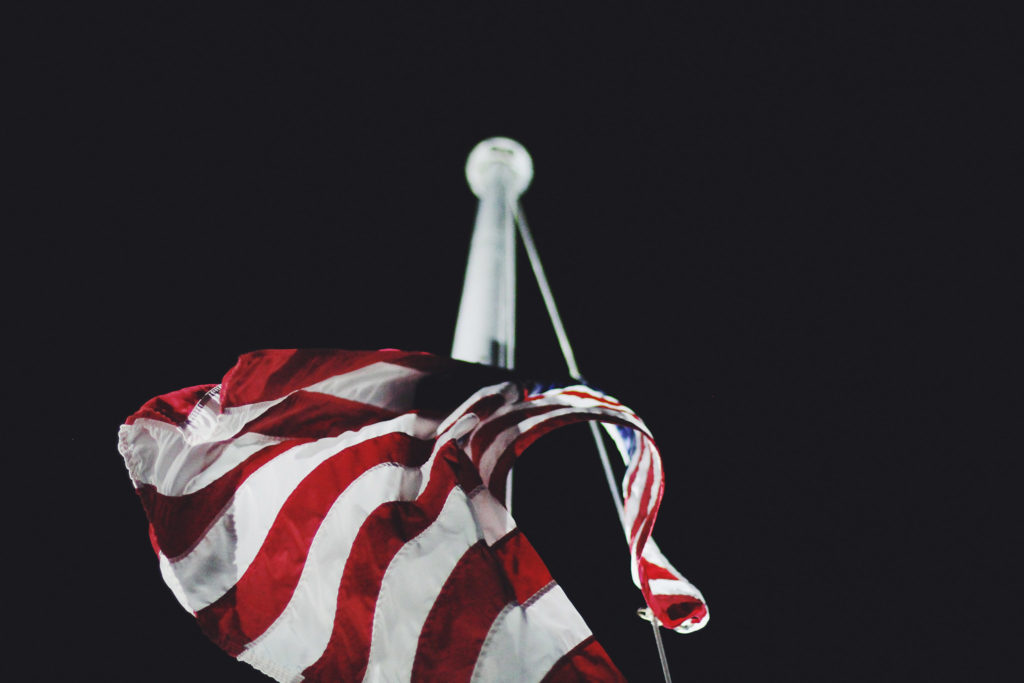Election Day, and What Came After

Author’s note: I read this essay on Tuesday night at Ryan Sartor’s Difficult to Name Reading Series at Turn! Turn! Turn! and am publishing it here for the first time.
“How’s the mood in here? Well, nothing is on fire.”
I was tweeting from the Oregon Convention Center, at what was supposed to be the Democrats’ election night celebration, watching the red, white, and blue balloons of American optimism leaking out hope slowly into the twilight hours of November 8, 2016.
And it was true. Nothing was on fire. There was no panic in the air, no screaming, no riots in the halls. Just the static of small conversations and cable news, CNN and its talking heads up on screens in every room in the building. Just another election night.
On the website of the New York Times, refreshing itself automatically on my phone, a meter claiming to predict the odds of the next president of the United States kept changing, the trembling needle pushing further and further to the right.
Hours passed, votes came in, and the needle kept pushing. By the time the Democrats got good news—Governor Kate Brown was elected—the needle was all the way into the red section. The color of hearty American blood.
Brown spoke, and maybe there were cheers, but the convention hall had become deflated rubber, a silent place, a house of disbelief, a vacuum. How could there be a fire in here? There was barely air to breath.
On the morning of November 8, 12 hours earlier, I woke up feeling impossibly relieved. It was like I’d stepped into a hot tub on a cruise down the Mexican coast, my phone hundreds of miles away, nothing to worry about but bubbles. I woke up like that, like Beyoncé must feel on her really good days, floating above the world. I knew in that moment that nothing could go wrong, that Hillary Clinton was going to win, that this nightmare election was going to be over and I could stop reading the news, watching debates and giving every square foot of my brain over to thinking about politics and pussy-grabbing. I was so sure.
It was early, and I rolled over and reached out to my wife.
“Do you want to go to Screen Door?” I said.
And we went. On most days, there’s a Portlandia brunch-episode-sized line at the Southern restaurant, but on this Tuesday, it was nearly empty. I took a photo outside and tweeted, “This will never happen again.”
We ordered a gluttonous breakfast of fried chicken and waffles and poured syrup on it like an Exxon oil spill. There may have been bacon involved. A group of young people walked in and took over a center table, a few in pantsuits, their voting accomplished and their victory certain. Holy shit, I was happy then.
Then day turned to night and the needle moved and some 77,000 people in three swing states made a decision I hope they regret.
Wednesday was not an improvement.
I took the bus to my office, shaken, pale, half-expecting the inevitable great Pacific Northwest earthquake to arrive and crack the Morrison Bridge in half. But the streets were still and normal. The bus paused at my stop. The light changed, and it rolled along. Inside the Starbucks where they know my name, people ordered lattes and coffee and spinach wraps. I felt sick and hollow, like my stomach had been squeezed out and tied around my chest.
At the office, people sat at their desks, trying to work, trying not to say too much.
“How did this happen?” somebody young asked somebody who looked like they might have an answer. “Why didn’t we know?”
I couldn’t take it. I closed my laptop, took the elevator down four floors and walked back out to the bus. It wasn’t raining in Portland that day but everything looked grey. My heart sunk like a busted submarine.
What was this feeling? When was the last time I—
Oh, I remembered. It’s grief. This is what grieving feels like.
I took out my bus pass and headed for the funeral.
